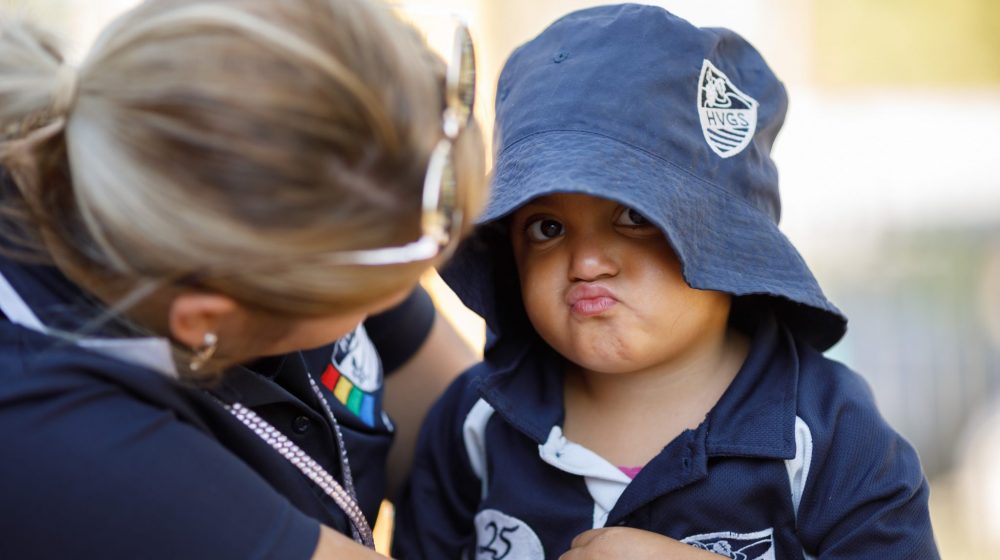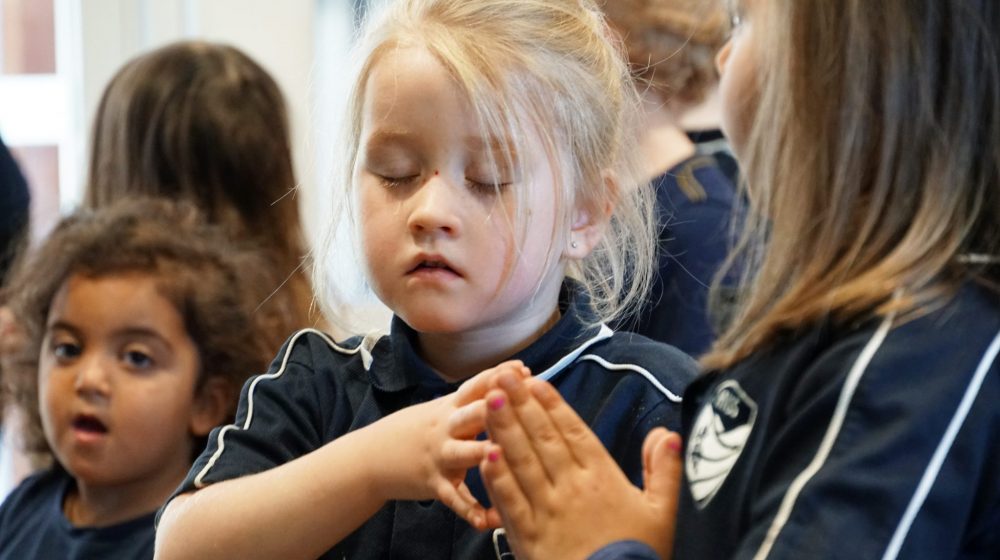Published on September 2, 2019
Without a doubt, right now in a supermarket somewhere, a toddler is expressing some strong emotions! We’ve all been there, and it isn’t pleasant for anyone.
It’s no secret that little children can have very big emotions which can be both challenging and worrying for parents.

In the Early Learning Centre, the introduction of mindfulness, guided meditation, breathing techniques and discussion to assist children in recognising and regulating these big emotions, is having a significant impact on their emotional intelligence, concentration and cognitive flexibility.
What are big emotions?
In the same way we do, children also feel a broad spectrum of emotions. As adults, we draw upon a wide range of past experiences, knowledge and maturity to assist us to regulate these emotions day-to-day. Preschoolers are still learning how to manage their feelings successfully. Without the vocabulary to adequately express precisely how they are feeling; they demonstrate their frustrations in other ways. ‘Big’ emotions are those feelings which are felt profoundly/intensely or are overwhelming.
Children struggling to regulate emotions such as anger, frustration, disappointment, nervousness or sadness, maybe too overwhelmed to discuss how they are feeling, or to choose appropriate actions or behaviour. Often this results in crying, yelling or destructive behaviour which can leave parents at a loss of what to do.
Managing emotions through mindfulness
During 2019, educators in the Early Learning Centre have been working with Head and Heart Mindfulness to engage children in mindful listening, breathing and relaxation techniques and yoga to help them remain calm and identify how they are feeling. Children are encouraged to name and express their emotions and, with the support of educators, to choose an appropriate course of action.
“As a result of our mindfulness program, children are recognising how they are feeling and regulating their behaviours when they are challenged with ‘big’ emotions,” said Sarah Bilton-Smith, Director of the ELC. “Many children are no longer requiring educator support or intervention as they navigate more complex social and emotional experiences.”

How parents can help
There’s a few simple tools and strategies parents can use to help children learn to manage their emotions and their feelings.
- Name feelings: Putting a label on feelings helps children identify what they are feeling and assists in the development of their vocabulary to communicate and express themselves better. Parents can assist by using words to solve problems and talking to their children about how, and why, those feelings arose.
- Empathise: It can be hard to stay cool in the midst of an emotional outburst, but parents can try to understand the meaning and feeling behind their child’s behaviour by allowing themselves to empathise with their child. This acts as a learning opportunity for children as parents can then guide them to more appropriate or positive responses.
- Practice mindful techniques at home: Parents can use mindful techniques at home to help diffuse volatile behaviours. Practising deep breathing, refocusing children on a new task, and taking time out to go for a walk are all useful exercises to try when emotions start to escalate.
Remember that talking through the problem, understanding what is going on and keeping calm are essential.
“I feel so happy and relaxed now.”
Seeking help
Parents can speak with educators in the ELC if they notice their child is finding emotional regulation a challenge.
Working in partnership with families, by engaging similar strategies, will be of great benefit to children’s ongoing learning and development.




